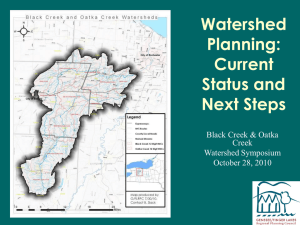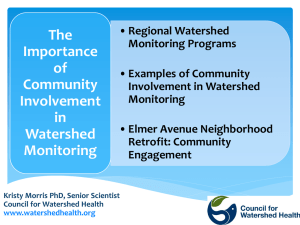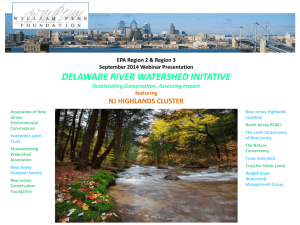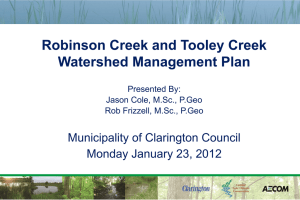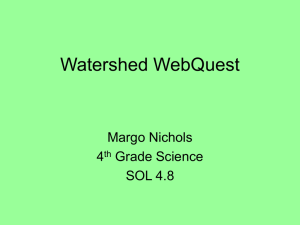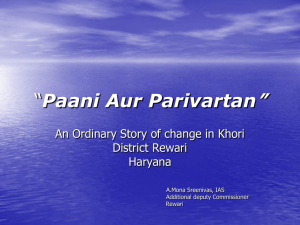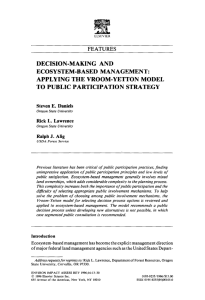Watershed management
advertisement
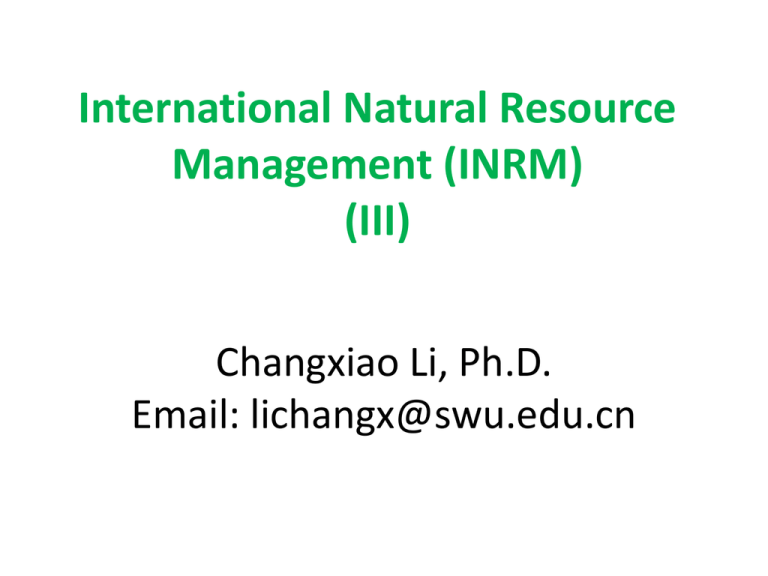
International Natural Resource Management (INRM) (III) Changxiao Li, Ph.D. Email: lichangx@swu.edu.cn Contents in this evening 1. Review of the Last Two Courses 2. Ecosystem-based Management in INRM (Principles and Application) 1. A Review of the Last Course 1.1 Why Do We Study INRM? -Rapid Population Increase -Limited Resources 1.2 Issues in INRM -Issues Related to Society (Fairness/Equity) -Issues Related to Economy (Over Exploitation/Overuse ) - Issues Related to Ecology (Separating Humankind and Nature ) -Complexities of Different Issues/Conflicts 1.2 Ecosystem-based Management 1. Concept: Ecosystem-Based Management (EBM) is a management approach that: • Integrates ecological, social, and economic goals and recognizes humans as key components of the ecosystem. 1.2 Ecosystem-based Management • Considers ecological- not just politicalboundaries. • Addresses the complexity of natural processes and social systems and uses an adaptive management approach in the face of resulting uncertainties. 1.2 Ecosystem-based Management • Engages multiple stakeholders in a collaborative process to define problems and find solutions. • Incorporates understanding of ecosystem processes and how ecosystems respond to environmental perturbations. • Is concerned with the ecological integrity of terrestrial-marine systems and the sustainability of both human and ecological systems. 1.3 Ecosystem Types • • • • • • • • Coastal Estuarine Freshwater Marine Terrestrial Watershed Wetlands River 1.4 Principles of Ecosystem-based Management 1. Sustainability -Regarding intergenerational sustainability as a precondition 2. Goals -Establishing measurable goals 1.4 Principles of Ecosystem-based Management 3. Sound Ecological Models and Understanding -Relying on research performed at all levels of ecological organization 4. Complex and Connectedness -Recognizing the importance of biological diversity and structural complexity 1.4 Principles of Ecosystem-based Management 5. The Dynamic Character of Ecosystems -Recognizing that change and evolution are inherent in ecosystem sustainability 6. Context and Scale -Operating over a wide range of spatial and temporal scales -Being affected by surrounding systems -Thus, there is no single appropriate scale or timeframe for management. 1.4 Principles of Ecosystem-based Management 7. Humans as Ecosystem Components -Valuing the active role of humans in achieving sustainable management goals 8. Adaptability and Accountability -Current knowledge and paradigms provisional, incomplete, and subject to change -Management approaches needed to be tested by research and monitoring programs 2. How about the Ecosystem-based Management in the US? • Show Slides of the Cornell Life • Requesting to Think about the Eco-friendly Living Styles while viewing the PPT 3. Watershed-based Management 3.1 Concept Watershed in Michigan, US Watershed Components Hydrological Cycle in the Watershed How about this Management? Watershed management is mostly about land use. Watershed Adaptive Management -Watershed adaptive management is a multistep, iterative process consisting of watershed monitoring, assessment, planning, implementation, and evaluation. -Inherent to the process is a period of learning based on changing conditions that leads to improved decision-making to correct problems. Steps in Watershed Management Processes of Watershed Adaptive Management The “adaptive” part of watershed management occurs when assessments of changing conditions and the responses of the watershed to management are used to make new decisions. Watershed Management Conceptual Model and Indicators • Ecological or Social Endpoints • Watershed Processes Influencing Endpoints • Human Activities Influencing Watershed Processes • Draw a Conceptual Model • Select Watershed Indicators Human Activities Influencing Watershed Processes Thank you!


